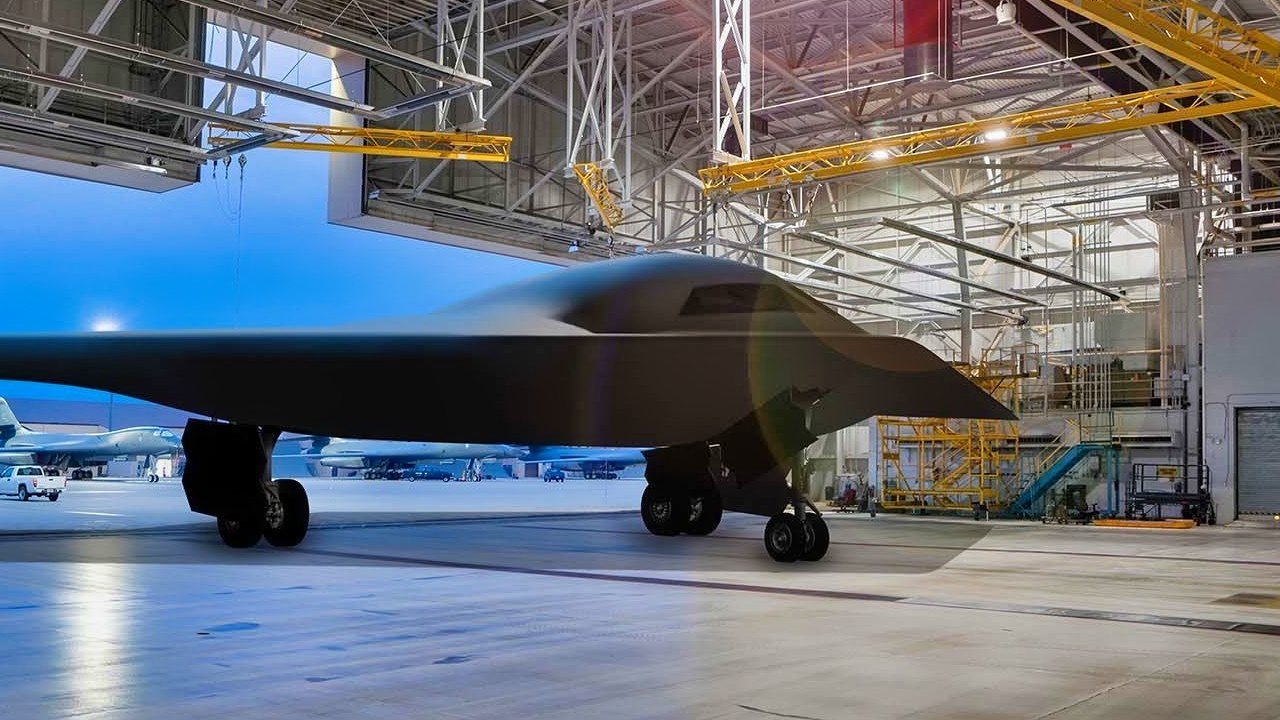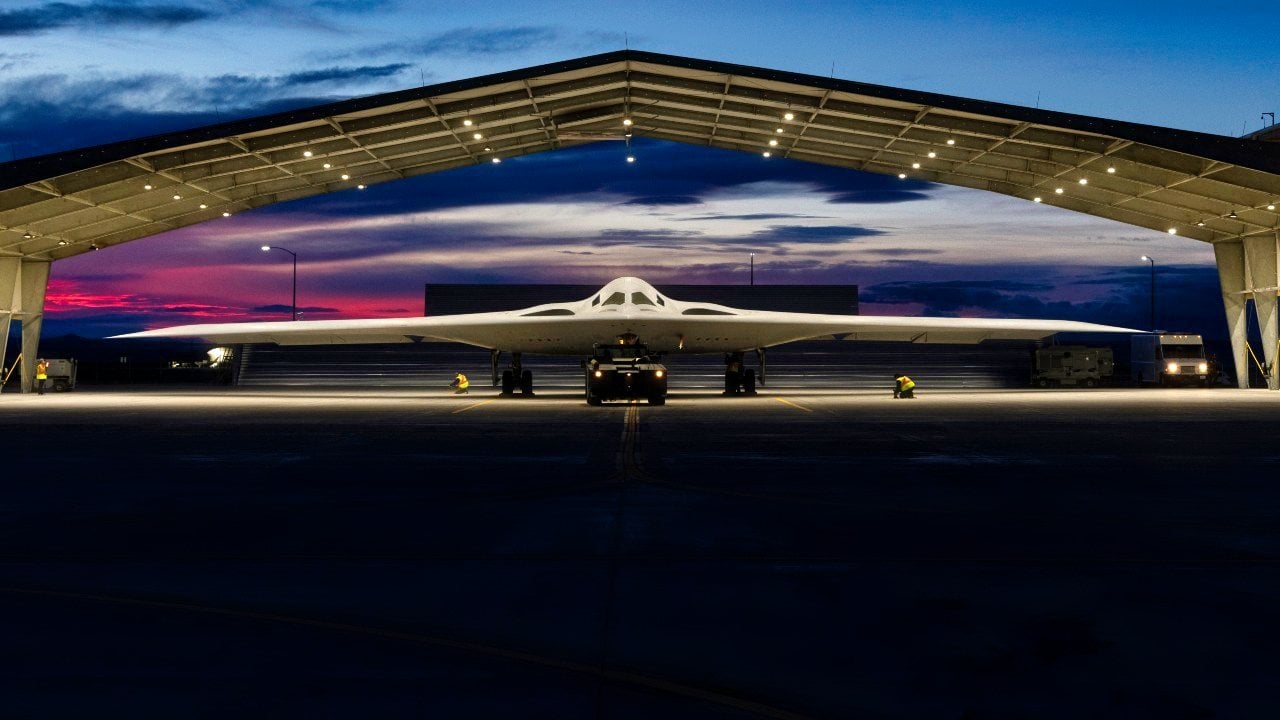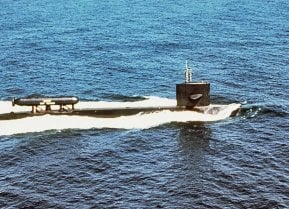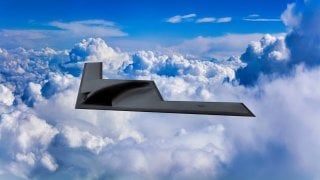Is 100 B-21 Raider Stealth Bombers Really Enough?
The Northrop Grumman B-21 Raider, the future backbone of the U.S. Air Force's bomber fleet, has entered low-rate initial production (LRIP). This stealth bomber, set to replace the B-1B Lancer and B-2 Spirit, is on track for service entry by the end of the decade.
What You Need to Know: The Northrop Grumman B-21 Raider, the future backbone of the U.S. Air Force's bomber fleet, has entered low-rate initial production (LRIP). This stealth bomber, set to replace the B-1B Lancer and B-2 Spirit, is on track for service entry by the end of the decade.

-Despite initial losses, with Northrop Grumman estimating a potential $1.56 billion loss on the first five units, the company is committed to maintaining the program's schedule and budget.
-The U.S. Air Force plans to acquire at least 100 Raiders, with potential increases in production, making it crucial in future warfare scenarios against near-peer adversaries.
Is 100 B-21 Raiders Going to be Enough?
Earlier this year, the United States Air Force's Northrop Grumman B-21 Raider entered low-rate initial production (LRIP), meaning that the manufacturing of production aircraft had begun. The future backbone of the U.S. Air Force's bomber fleet is now on track to begin entering service before the end of the decade. It will replace the aging Rockwell B-1B Lancer and Northrop B-2 Spirit.
To help facilitate the LRIP and to keep costs under control, the six original prototypes that are being used in test flights were built on the same production lines that will provide the final aircraft.
This week, it was reported that the Pentagon will likely award Northrop Grumman a contract for the second LRIP, the company announced during its third quarter 2024 earnings call with investors. During the call, Northrop CEO Kathy Warden said that the ground and flight testing on the strategic stealth bomber has continued.
The LRIP phase is currently on track for five lots, which will run through the end of this decade.
A Loss Leader – a Big Loss Leader
It was in July that the aviation and defense giant warned investors that it would take a significant loss on its first batch of the B-21 Raider. However, that move was made to allow the aircraft to remain on time, and more importantly for taxpayers, to stay on budget. The company cautioned at the time that it could lose up to $1.56 billion producing the first five Raiders.
"While the B-21 is a key program in our company, it is not the majority of [aeronautics] sales," Warden said, according to a report from Defense News.
At Least 100 to be Built
Obviously, Northrop Grumman is a "for profit" business, and will seek to make money – likely a lot of money – producing the B-21 Raider for the Air Force. Current plans call for the air service to field at least 100 of the flying wing aircraft by the end of the 2030s, but Warden said that number could increase.

"It would be premature for me to suggest where that force structure review will end up,” Warden added during the call today. "I do think in the coming months, we may get a better indication from the Air Force as to how they’re thinking about B-21 quantities in the long run."
There have been repeated calls that the air service would need at least 200 of the bombers should the United States find itself in a war with a near-peer adversary.
While the final number remains a matter of discussion and speculation, the Air Force has remained committed to the B-21. That comes even as the service has put its Next Generation Air Dominance (NGAD) program – which calls for a system of systems including a sixth-generation manned fighter – on hold for now. Northrop Grumman had even voluntarily withdrawn from that competition, leaving just rivals Boeing and Lockheed Martin to duke it out.
Northrop Grumman famously (even infamously) competed in the Advanced Tactical Fighter (ATF) program in the late 1980s and early 1990s, but saw its entry – the YF-23 Black Widow II – lose out to what became the Lockheed Martin F-22 Raptor.
Author Experience and Expertise: Peter Suciu
Peter Suciu is a Michigan-based writer. He has contributed to more than four dozen magazines, newspapers, and websites with over 3,200 published pieces over a twenty-year career in journalism. He regularly writes about military hardware, firearms history, cybersecurity, politics, and international affairs. Peter is also a Contributing Writer for Forbes and Clearance Jobs. You can follow him on Twitter: @PeterSuciu. You can email the author: [email protected].
Image Credit: Creative Commons and/or Shutterstock.


